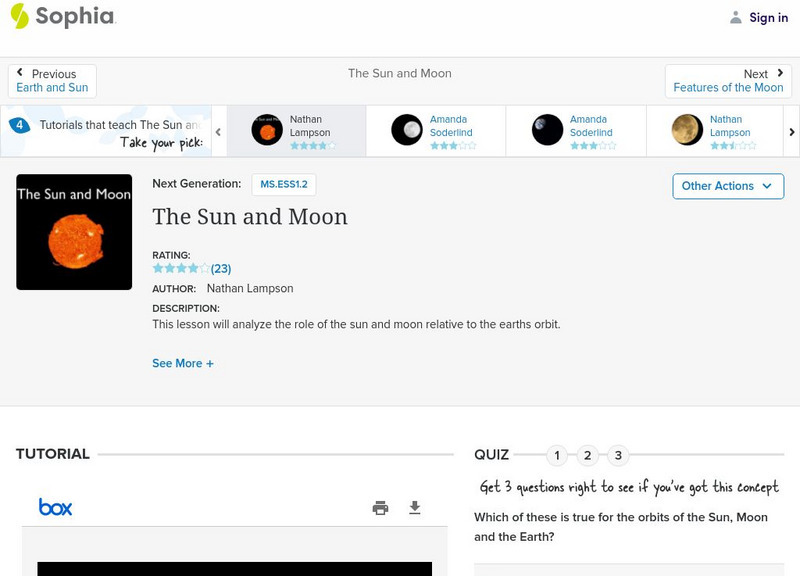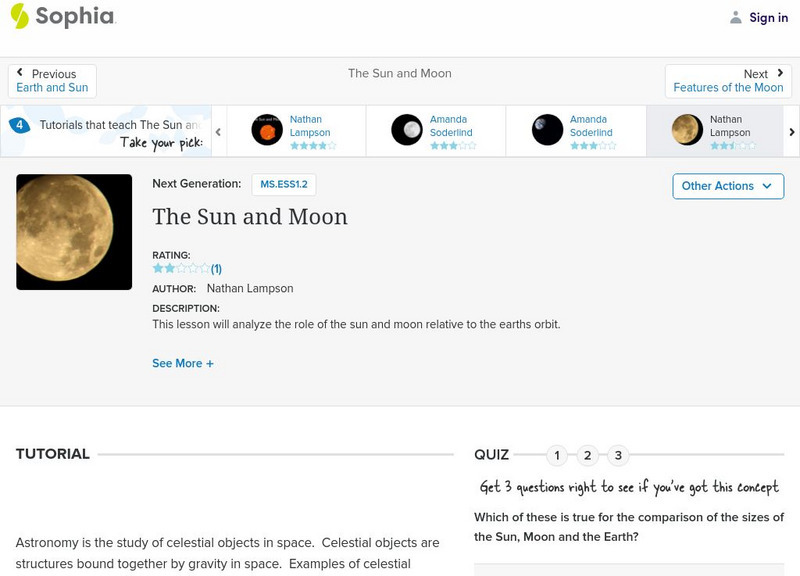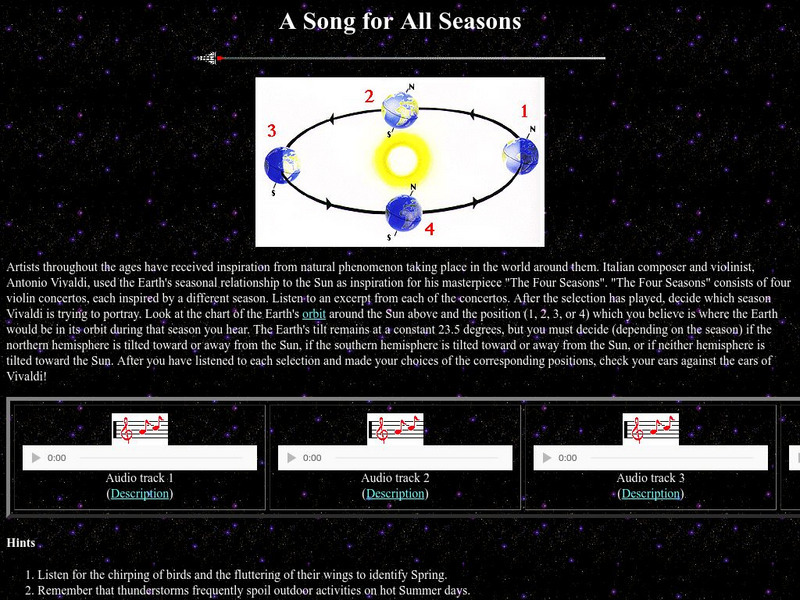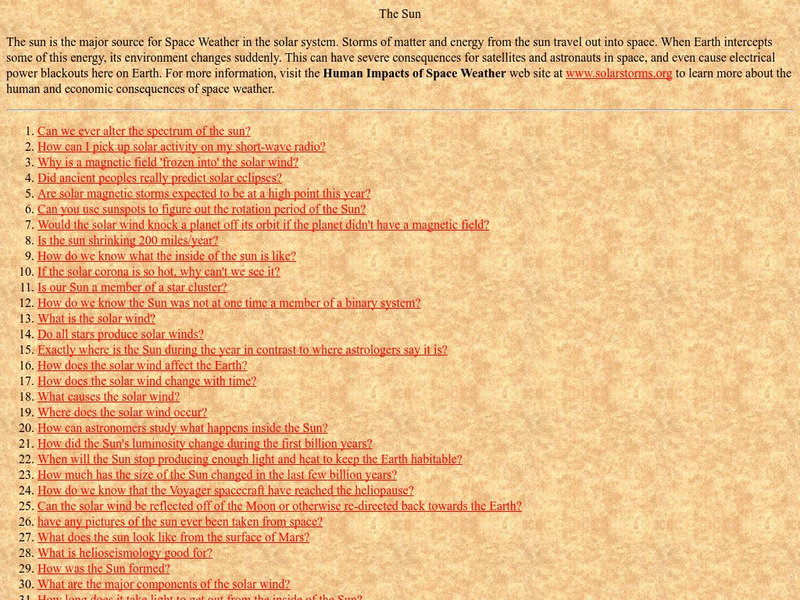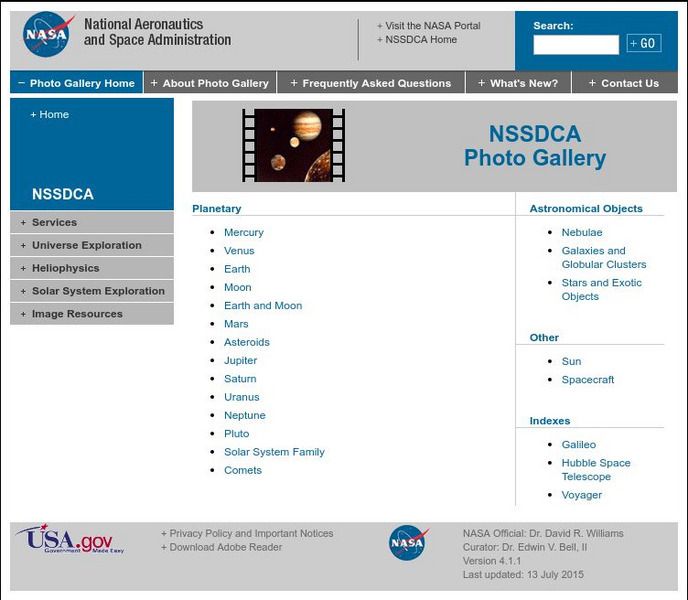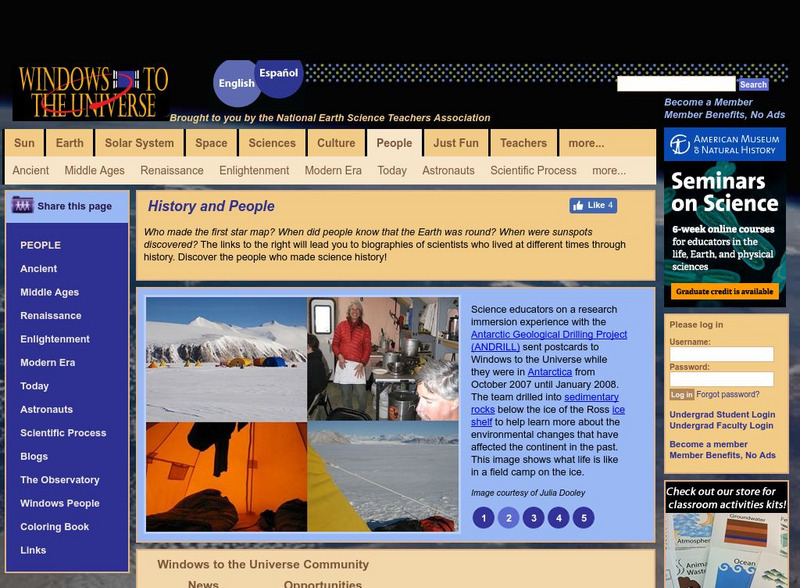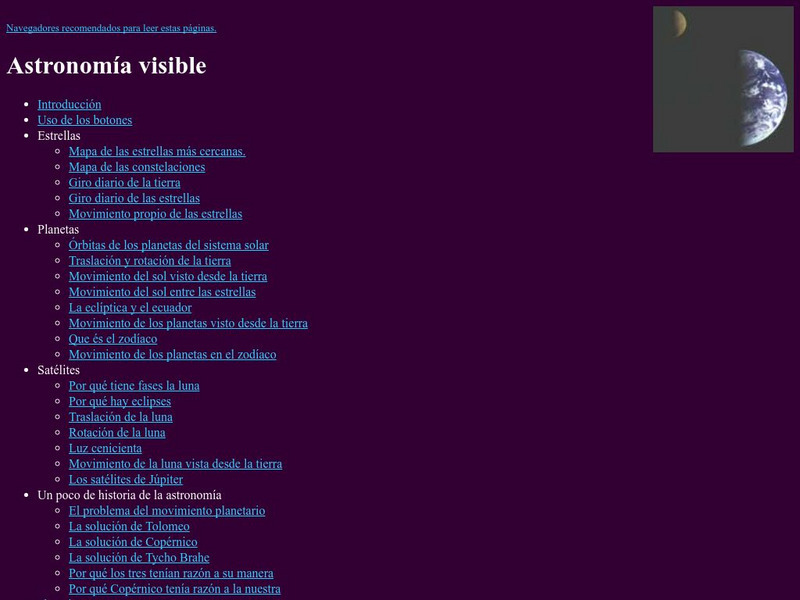Hi, what do you want to do?
Sophia Learning
Sophia: The Sun and Moon
An expertly illustrated presentation which highlights the sun and moon, and their relationship to the Earth.
Nine Planets
The Nine Planets: Sun Picture List
Various pictures and movies of the sun. Download some of these files and then give a presentation to your class explaining the solar phenomena.
PBS
Pbs Learning Media: Solar System Scale Model
Teach the concept of scale models and the size of the solar system through this extensive lesson plan. Students will learn about scale models, estimate which objects to use to create a scale model of Earth and Sun, and figure out how far...
Ducksters
Ducksters: Astronomy for Kids: Stars
Kid's learn about the science of stars like our Sun. Giant hot balls of gas and energy made mostly of hydrogen and helium.
Sophia Learning
Sophia: The Sun and Moon: Lesson 3
This lesson will analyze the role of the sun and moon relative to the earth's orbit. It is 3 of 4 in the series titled "The Sun and Moon."
Sophia Learning
Sophia: The Sun and Moon: Lesson 4
This lesson will analyze the role of the sun and moon relative to the earth's orbit. It is 4 of 4 in the series titled "The Sun and Moon."
University of Florida
Baldwin Library: Sun, Moon and Stars
A scanned copy of the 1899 publication of Sun, Moon and Stars by E. Richardson, a book of children's poetry.
The Wonder of Science
The Wonder of Science: 5 Ess1 1: Stellar Brightness and Distance
Students will learn about stellar brightness and distance to be able to support their argument about the apparent brightness of our sun compared to other stars due to their distances with these lesson plans.
NASA
Nasa: Imagine the Universe: The Sun
Site discusses the regions of the Sun's atmosphere such as the Photosphere, Chromosphere, and Corona. Provides sources for educators as well as additional links for students.
Science Education Resource Center at Carleton College
Serc: Calculating the Declination of the Sun for Elementary Students
In the school courtyard, students will measure the apparent path of the sun across the sky using a toilet plunger. Students will then generate questions as to why the sun appears to move, and what is really happening in the process. We...
PBS
Pbs News Hour Extra: Satellites Orbit the Sun to Better Predict Solar Storms
For the first time, NASA scientists have generated a full image of the sun, front and back, using twin orbiting satellites. The new view of Earth's star will allow for the study of solar weather events like coronal mass ejections that...
NASA
Nasa: Imagine the Universe: Welcome to the World of X Ray Astronomy
Site recounts how X-rays were discovered as well as who discovered them. Offers graphics, links to facts on this topic, a quiz, and teacher resources.
NASA
Nasa Star Child: Uranus, Neptune's Twin (Level 1)
Get to know the twin of Neptune with this introduction to Uranus. Listen to the information in an audio file. Features include a printable version of the page, and vocabulary words are linked to a glossary of terms.
NASA
Nasa Star Child: A Song for All Seasons
After listening to excerpts from four of the violin concertos from "The Four Seasons" by Italian composer and violinist, Antonio Vivaldi, decide which excerpt was meant to go with which season, and also decide where the earth would be in...
NASA
Nasa: Image Science Center: Ask the Space Scientist
A NASA space scientist provides 98 questions and answers about the sun, the center of our solar system.
NASA
Nasa Space Science Data Archive: Photo Gallery
A website featuring a collection of images from NASA. Collection includes images of planets, comets, nebulae, galaxies, stars, sun, and spacecrafts.
Crayola
Crayola: Celestial Characters (Lesson Plan)
A fun lesson plan incorporating language arts, science, and art. Students read myths and legends about the sun, moon, or stars, then create a sculpture, and write their own story about it. Also provides adaptations and a list of...
Better Lesson
Better Lesson: Our Sky
What objects are in the day sky and the night sky? How do they seem to move? Come and explore with us as we discover the sun, moon, planets and stars! This detailed lesson plan includes pictures and videos of the instructional activity...
Utah Education Network
Uen: The Night Sky
Learn about the rotation of the earth, the movement of the moon, and the position of the sun.
National Earth Science Teachers Association
Windows to the Universe: History & People
Biographies of people throughout history who looked at the sky and wondered what was there. Links to a detailed description of the planets and interactive activities.
Other
Yohkoh Public Outreach Project: Yohkoh Movie Theater
The Yohkoh Public Outreach Project provides images, movies, and tours depicting our nearest star, the Sun. Content includes a wealth of information, learning activities, and much more.
Ministerio de Educación (Spain)
Ministerio De Educacion: Astronomia Visible
This site has maps of the nearest stars and constellations. Earth and star daily rotation, proper motion of the stars and many other topics about the solar system are also shown.Read phonetically
Institute and Museum of the History of Science
Museo Galileo: Multimedia: Video: Astronomical Use of the Plane Astrolabe
Invented in ancient Egypt, the plane astrolabe is a tool used by astronomers and navigators to determine time and identifying positions of the Sun, Moon, stars, and planets. Read text or view the video to understand the details of its...
NASA
Nasa: Living With a Star
This NASA educator's guide provides teachers with activities, resources, and materials to educate students about the Sun.
Other popular searches
- Sun and Stars
- Sun and Stars Diagram
- The Sun and Stars
- Moon, Sun and Stars
- Sun and Stars Powerpoint
- Moon Sun and Stars
- Sun and Stars Webquest
- Sun and Stars Web Quest
- Sun, Moon and Stars
- Sun Moon and Stars Activity
- Sun, Moon, and Stars





